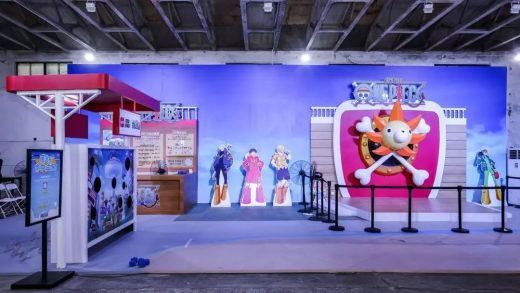I. Industry Risk Analysis
(1) Policy Risk
The concrete mixing station industry faces dual risks in policy formulation and implementation: The continuous tightening of environmental protection policies has raised the entry threshold (such as stricter environmental assessment approvals and requirements for production capacity replacement). Under the goal of carbon peaking, some regions implement staggered production or production restrictions, directly compressing the continuity of operations. The short policy adjustment cycle (such as the frequent updates of the emergency response mechanism for heavy pollution weather) forces enterprises to repeatedly invest in equipment upgrades (such as dust and noise reduction devices). The differences in local law – enforcement standards (such as dust control standards) exacerbate the fluctuations in compliance costs. In addition, the promotion policy of green building materials squeezes the market share of traditional concrete, but the implementation of policy support details (such as subsidies for comprehensive resource utilization) lags behind, resulting in a short – term inversion of costs and benefits.
(2) Economic Risk
The concrete mixing station industry is currently under the downward pressure of the economic cycle. The slowdown in the growth rate of fixed – asset investment has led to a contraction in real estate and infrastructure projects, directly reducing the demand for concrete. The high – level fluctuations in commodity prices combined with the rising transportation costs squeeze the profit margins of enterprises. The debt pressure of local governments has led to an extension of the project payment cycle, and the risk of bad debts for accounts receivable has increased sharply. The stricter environmental protection supervision forces equipment upgrades, and the cash flow is under pressure under the heavy – asset model. The over – capacity in the industry intensifies price wars, and small and medium – sized enterprises face the risk of being shuffled under the double – whammy of high equipment idle rates and high operating costs.
(3) Social Risk
From the perspective of inter – generational consumption, the concrete mixing station industry faces the risk of a structural shift in social demand: The younger generation is more inclined to low – carbon construction technologies, and their environmental concerns about traditional high – energy – consuming mixing stations are intensifying. The iteration of mandatory standards for green building materials on the policy side may eliminate backward production capacity. The aging population has led to a shrinking labor force in the construction industry, forcing the popularization of prefabricated buildings, which directly impacts the demand for cast – in – place concrete. Generation Z capital is more inclined to invest in ESG – compliant enterprises. The traditional heavy – asset, high – pollution model faces greater difficulties in financing, while intelligent transformation and clean energy substitution require high transformation costs, creating a two – way squeeze.
(4) Legal Risk
Entrepreneurs in the concrete mixing station industry face legal risks concentrated in four dimensions: environmental protection compliance (administrative penalties triggered by sub – standard exhaust gas and wastewater emissions), safety production management (accident compensation liability caused by violations in equipment operation and vehicle transportation), contract performance risks (economic disputes caused by loopholes in terms with upstream and downstream enterprises), and labor employment hidden dangers (arbitration risks caused by the failure to sign labor contracts and pay social insurance in a standardized manner). These potential risks may directly lead to operational obstacles and financial losses.
II. Entrepreneurship Guide
(1) Suggestions on Entrepreneurial Opportunities
Currently, entrepreneurial opportunities in the concrete mixing station industry are concentrated in the tracks of green transformation and intelligent upgrading: The explosion of regional infrastructure projects has created a demand for small and medium – sized mixing stations. Entrepreneurs can enter the county – level market by relying on local government and enterprise resources. Under the high – pressure environmental protection policy, the demand for the transformation of old mixing stations has increased sharply, providing environmental protection technology solutions such as the upgrade of dust and noise reduction equipment and the application of recycled aggregates. The popularization of digital twin technology and intelligent dispatching systems has created service gaps for building an Internet of Things management platform and developing a carbon emission monitoring system for mixing stations. The development of prefabricated buildings promotes the customized production of high – performance concrete, and entrepreneurs can focus on niche areas of special materials such as ultra – high – performance concrete (UHPC) and 3D – printed building materials.
(2) Suggestions on Entrepreneurial Resources
In the integration of entrepreneurial resources in the concrete mixing station industry, it is recommended to first lock in regional sand and gravel aggregate suppliers, cement plants, and logistics fleets to build a stable supply chain. Take advantage of local industrial park policies to obtain land use discounts. Reduce the investment in the mixing station production line through financial leasing or equipment installment payments (it is recommended to choose modular equipment for flexible expansion). Focus on binding 3 – 5 small and medium – sized construction companies to sign guaranteed procurement agreements, and simultaneously connect to building material trading platforms to broaden distribution channels. Form a core team with construction qualifications and experience in environmental protection approvals. Build a laboratory jointly with industry associations to share testing resources. Join a concrete transport vehicle dispatching alliance to reduce the empty – driving rate, and establish a second – hand equipment trading channel to revitalize idle assets in the industry.
(3) Suggestions on Entrepreneurial Teams
Entrepreneurs in the concrete mixing station industry need to form a composite team. The core members should have the abilities of production management, technology R & D, and market expansion. Priority should be given to recruiting technical backbones with more than ten years of industry experience and sales talents familiar with the regional infrastructure market. Key positions should be staffed with professionals proficient in environmental protection policies and regulations to deal with compliance challenges such as environmental assessment and energy consumption control. Members with a financial background should be included to strengthen the management of accounts receivable and cash flow. The team structure should maintain a ratio of 1:3 for the old, middle – aged, and young to balance experience inheritance and execution efficiency. It is recommended that the founder retain more than 70% of the equity and bind core members through an excess profit distribution mechanism. Regular training on safety regulations and the operation of intelligent dispatching systems should be carried out, and a 24 – hour shift emergency team should be established to deal with the risks of sudden environmental protection inspections and equipment breakdowns.
(4) Suggestions on Entrepreneurial Risks
Entrepreneurs in the concrete mixing station industry need to first strengthen environmental protection compliance management, strictly configure dust and noise reduction equipment and establish a real – time monitoring mechanism to avoid the risk of business suspension caused by non – compliance with environmental protection requirements. In response to the saturation of the regional market, it is recommended to break through homogeneous competition through differentiated services (such as customized special concrete and 24 – hour emergency supply). A dynamic cost accounting system should be established, and futures should be used to lock in the price fluctuation risks of bulk raw materials. At the same time, the management of accounts receivable should be strengthened, and a settlement model of prepayment + progress payment should be adopted with real estate customers. New – energy mixing trucks and photovoltaic power generation equipment should be deployed to reduce carbon emissions and adapt to the carbon tax policy in advance. An equipment maintenance technical team should be key – trained, and the status of production equipment should be monitored in real – time through the Internet of Things to reduce the risk of order default caused by sudden breakdowns.





